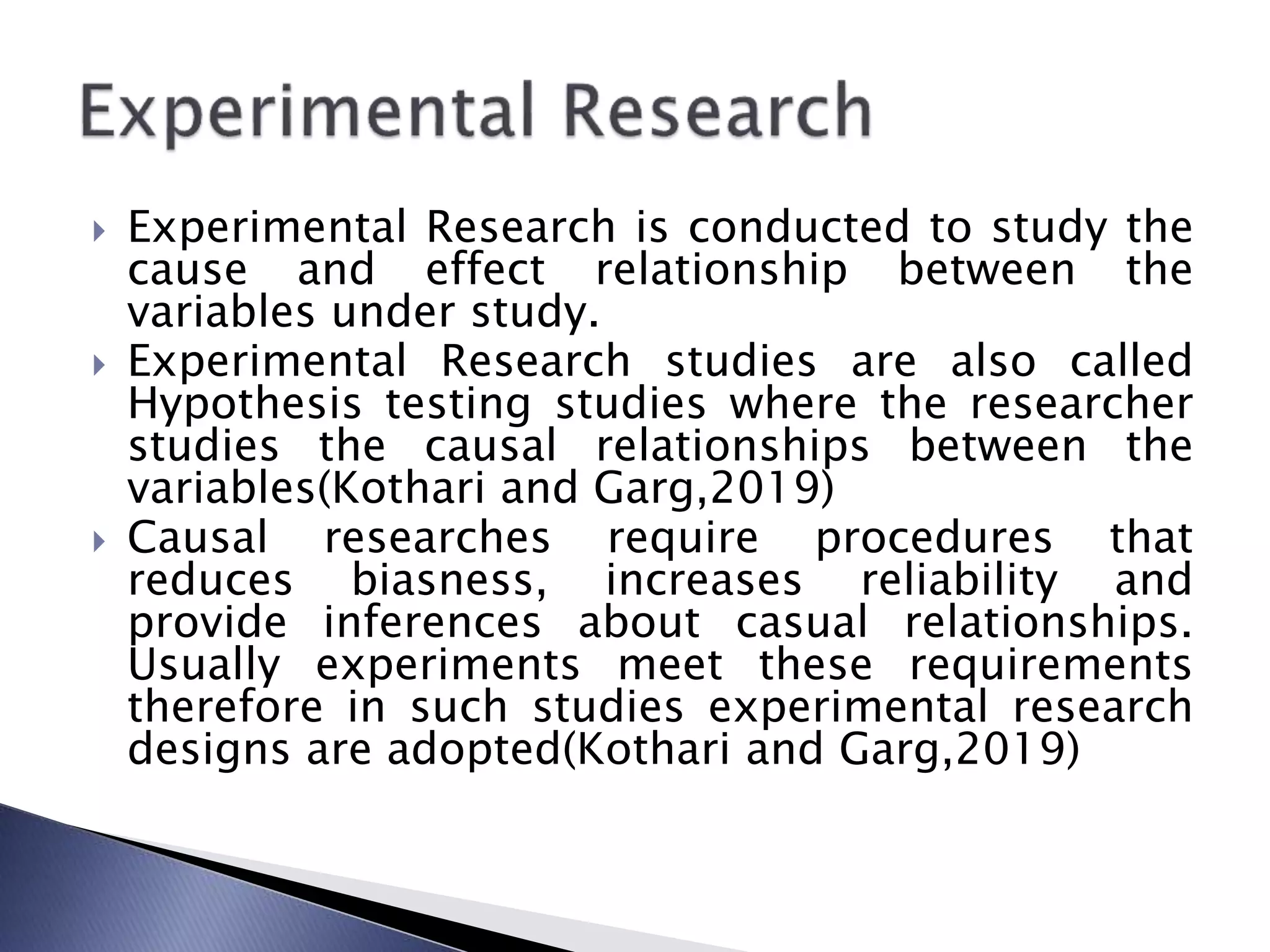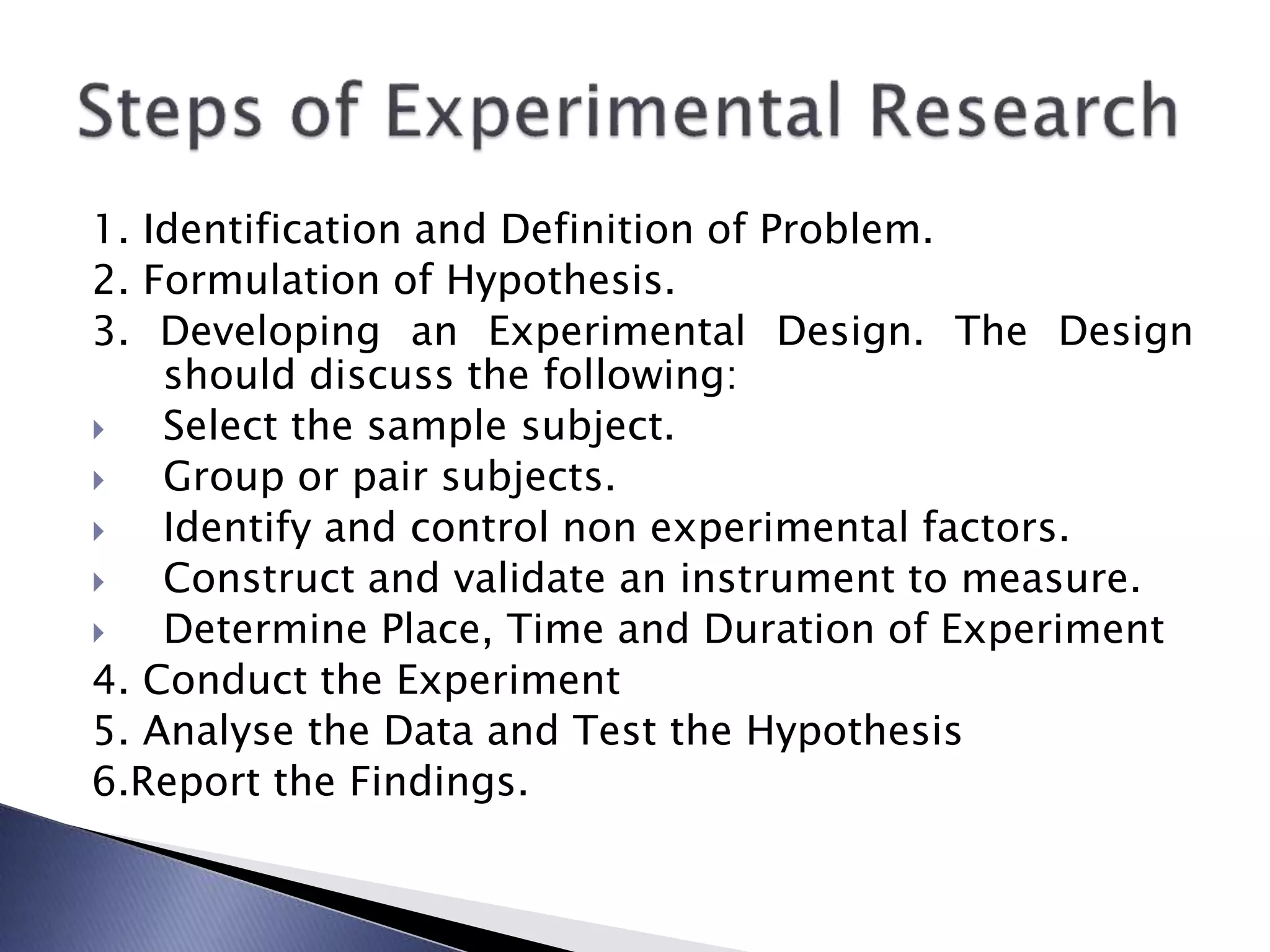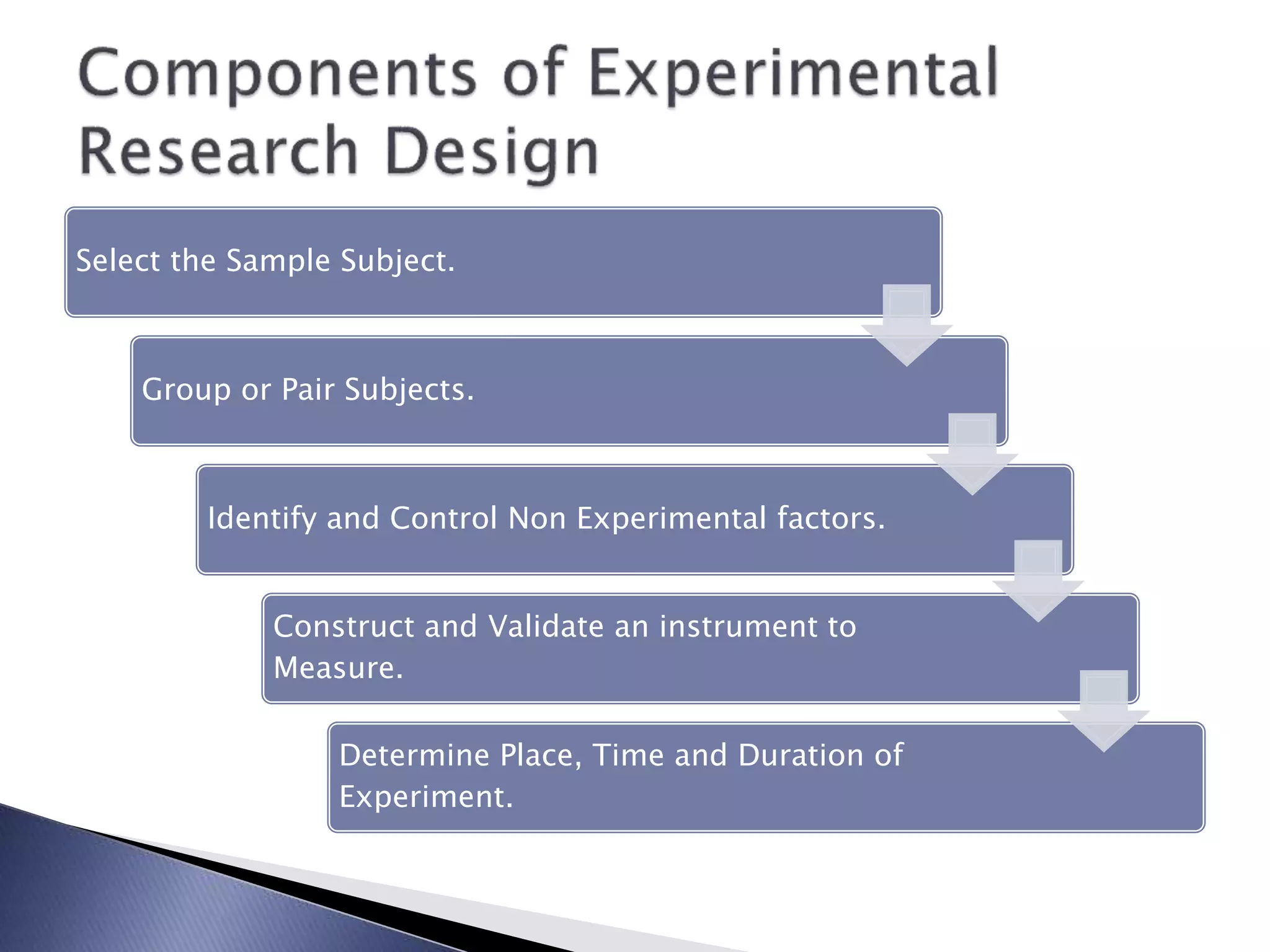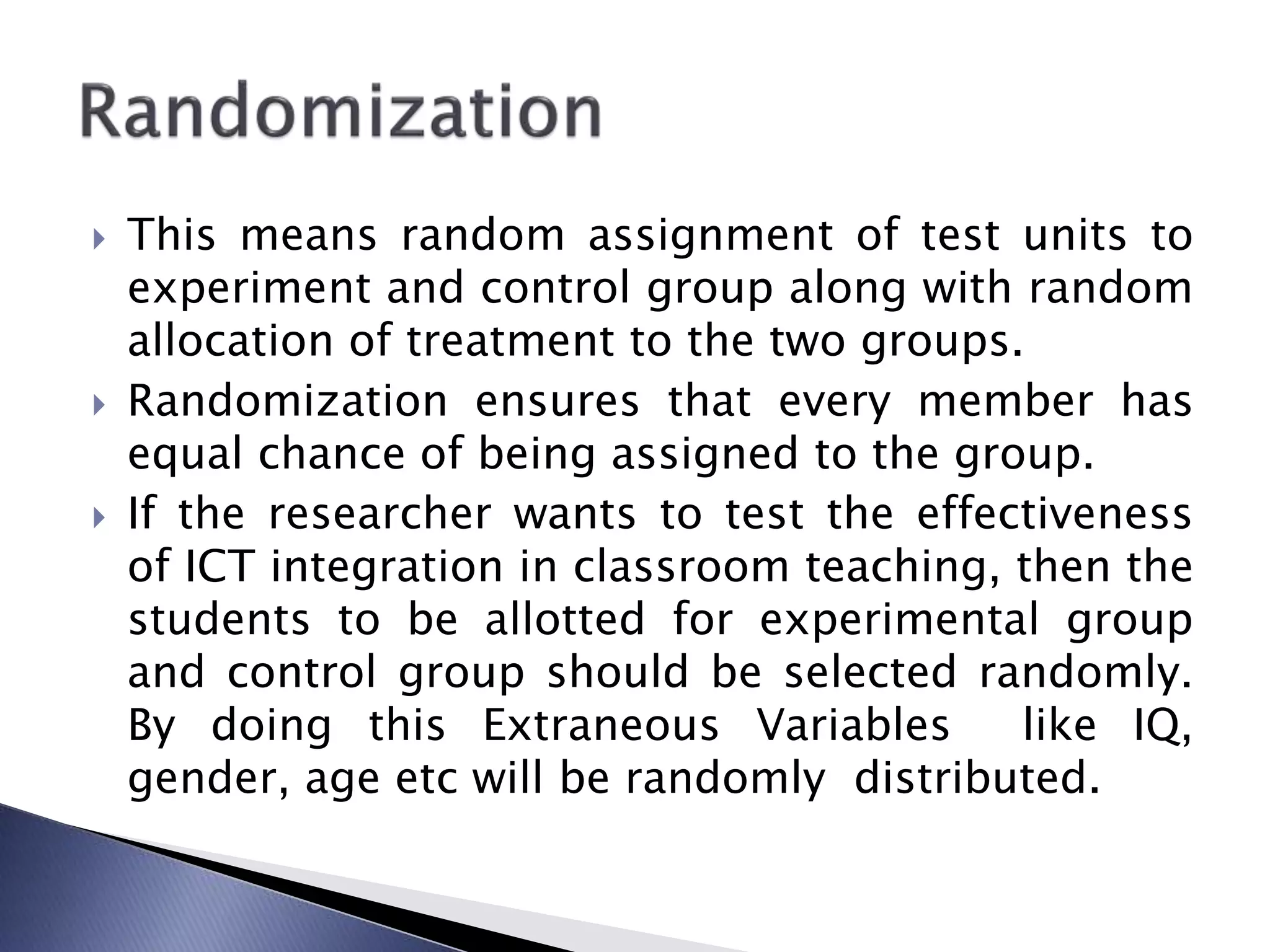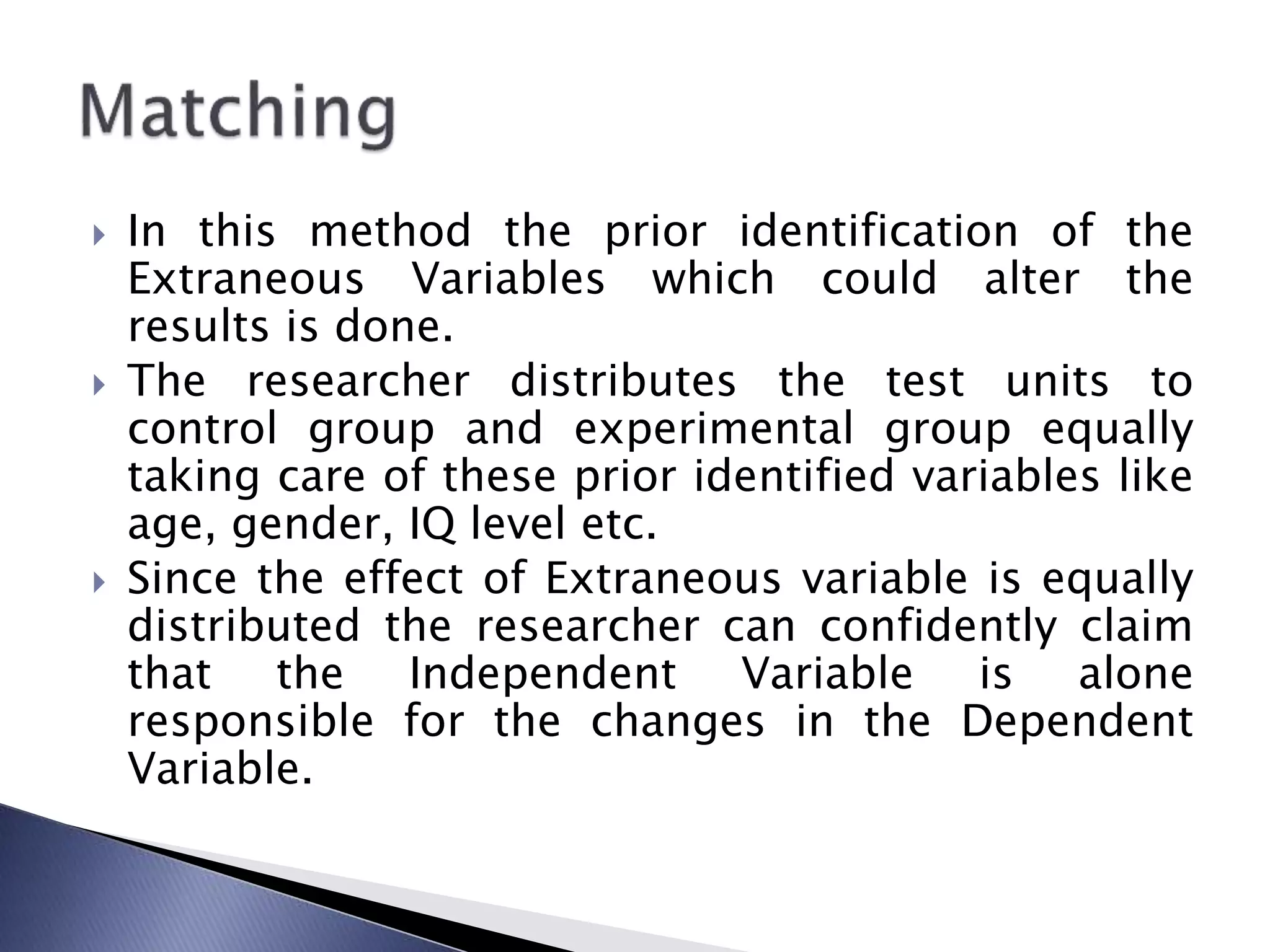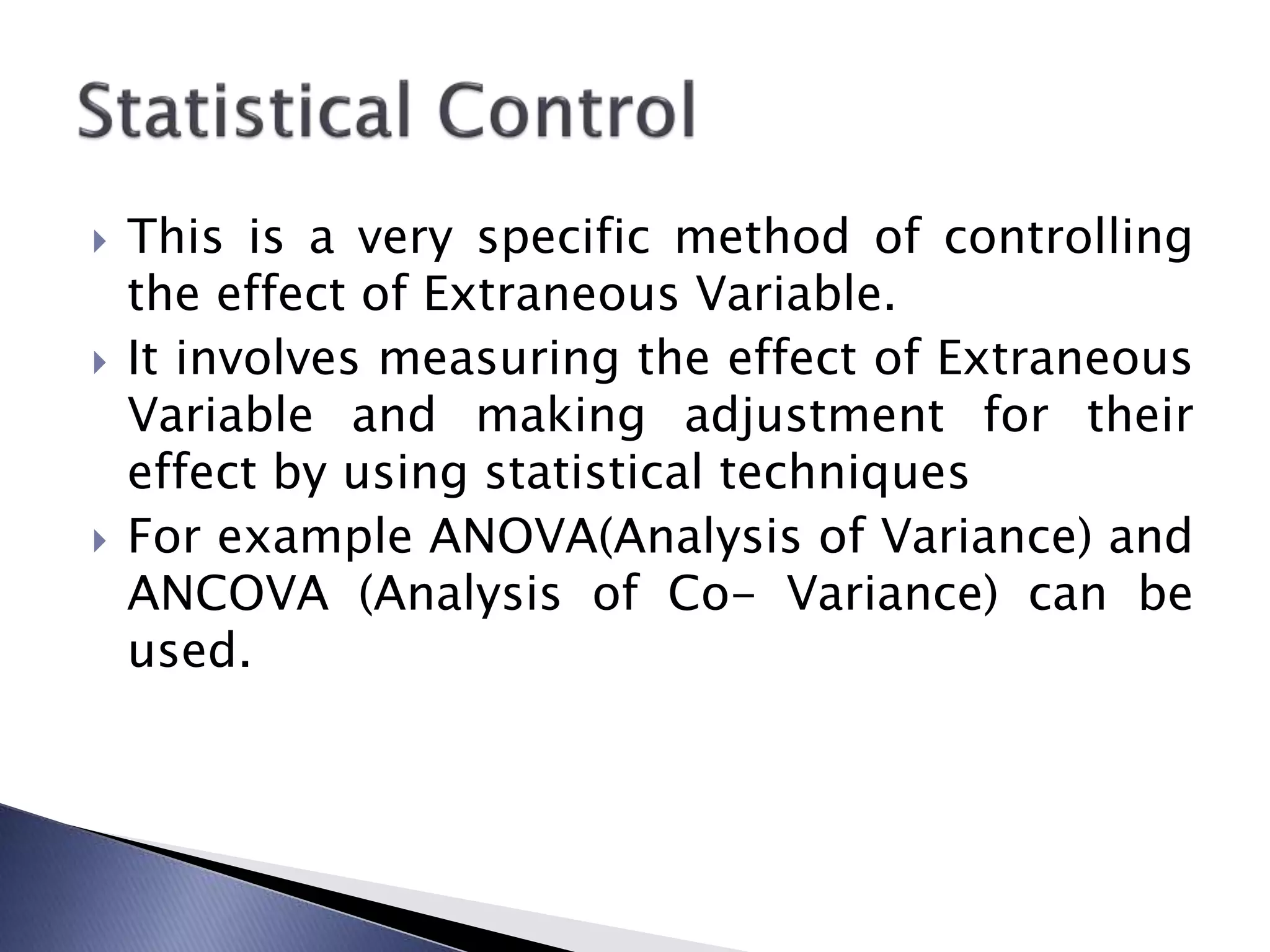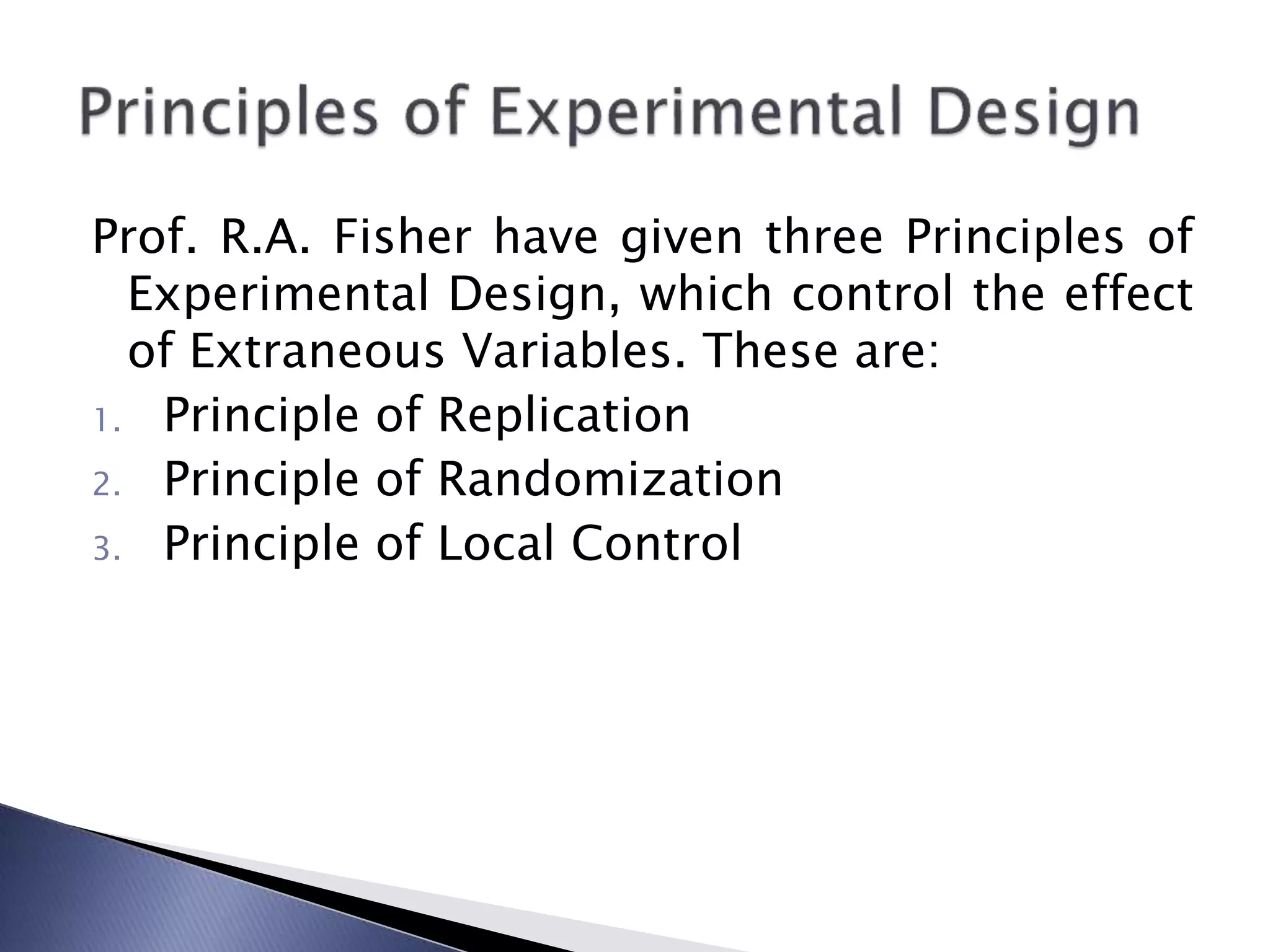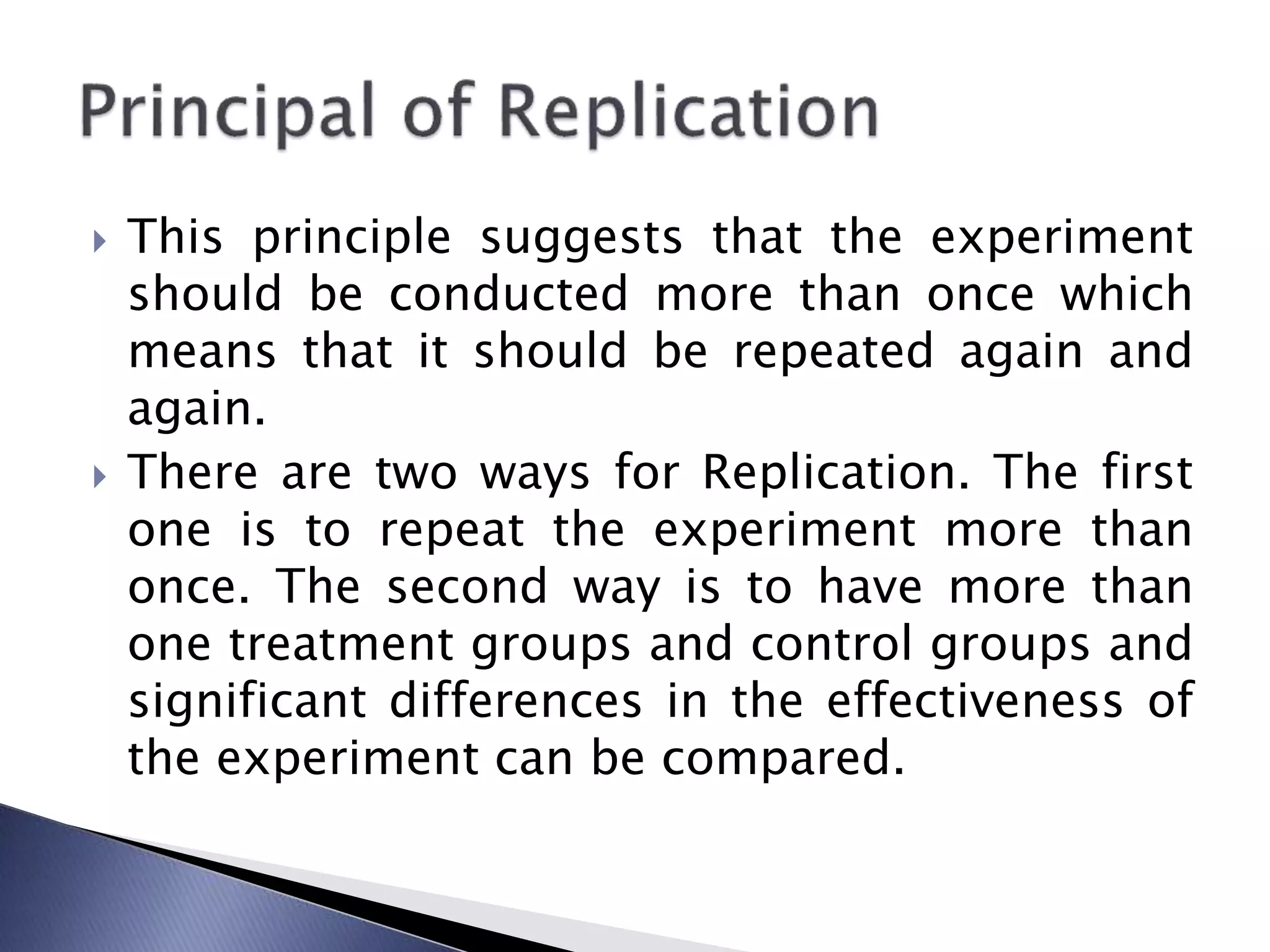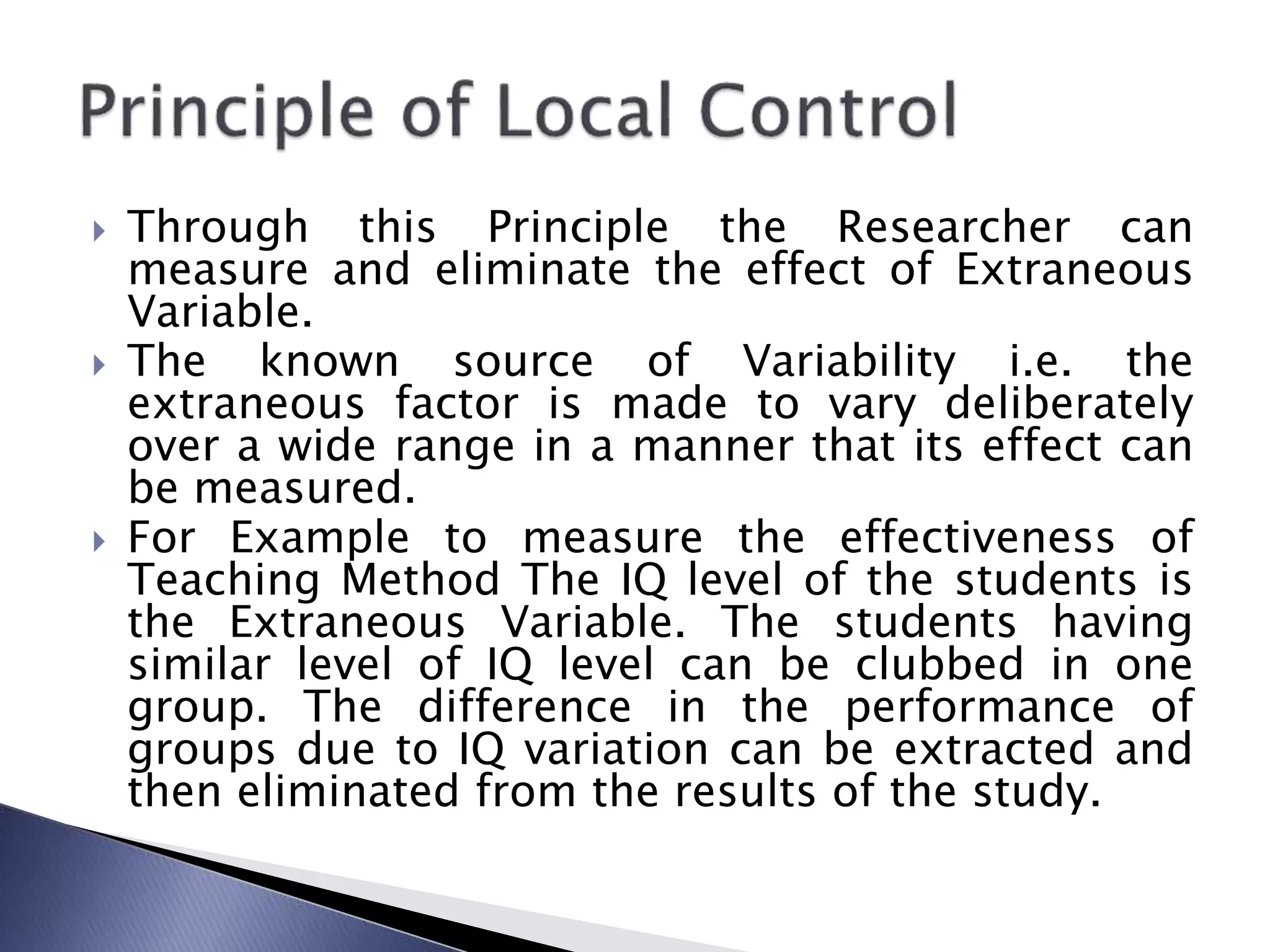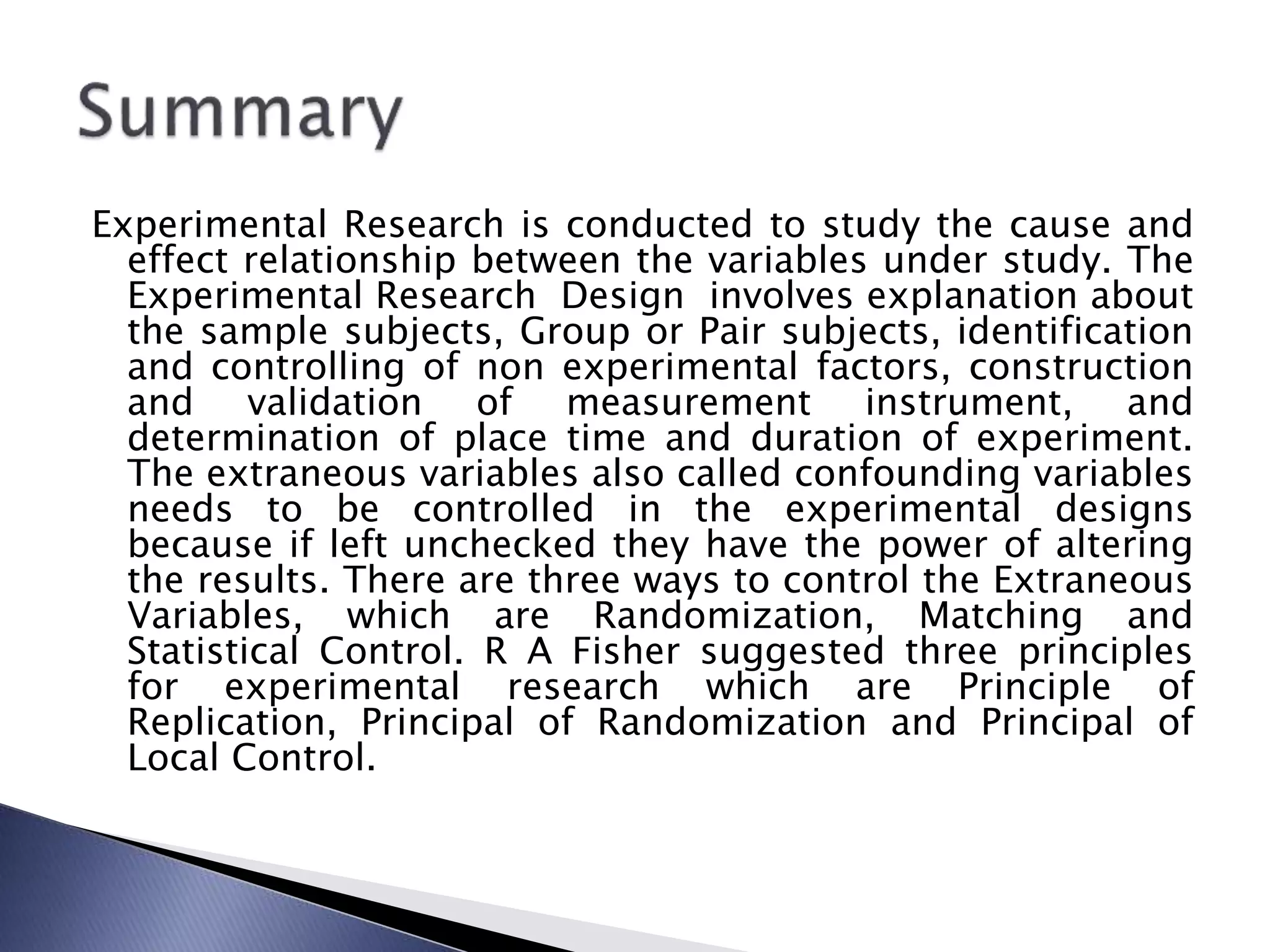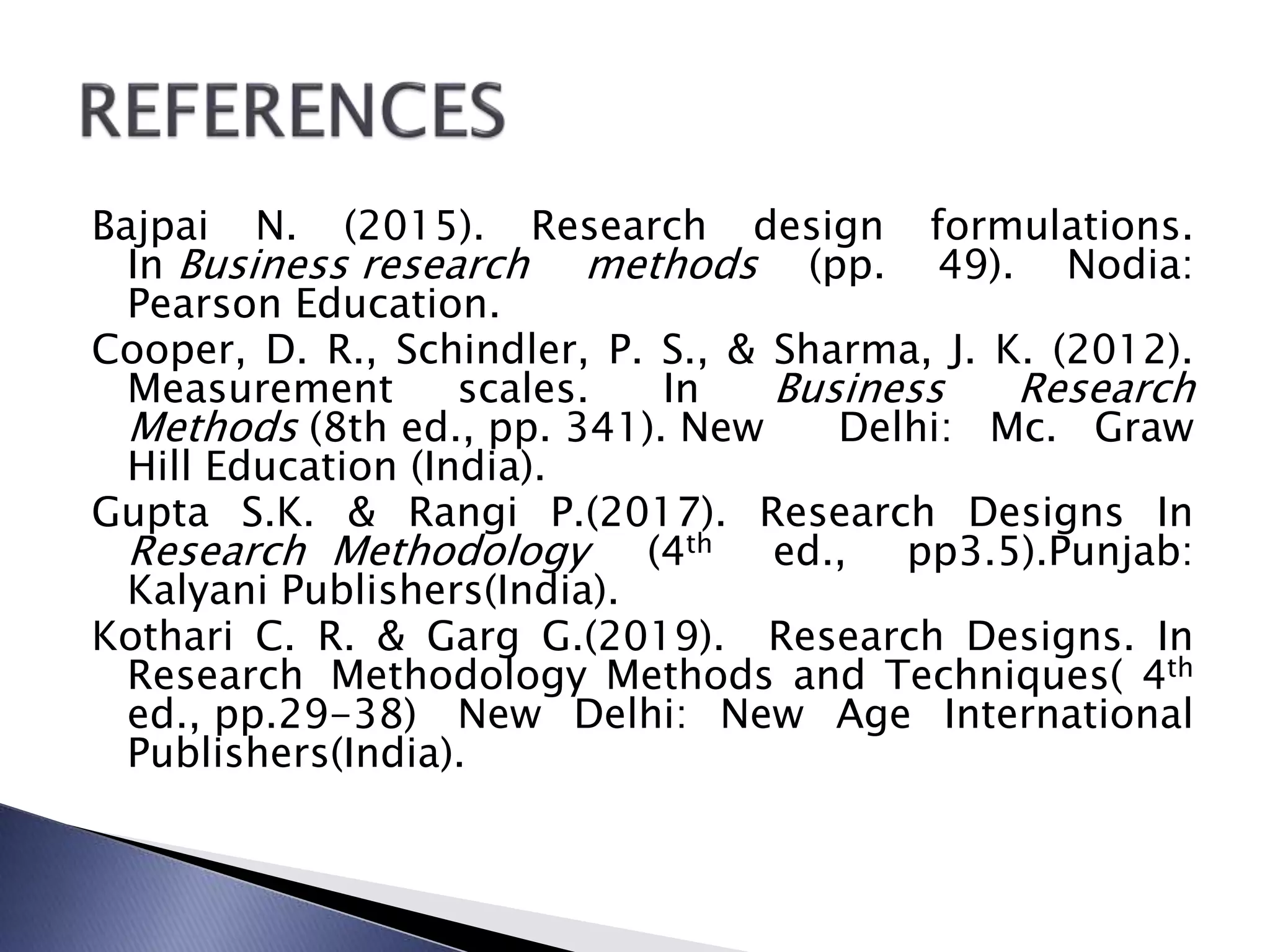The document discusses experimental research design. Experimental research is conducted to study cause-and-effect relationships between variables. The experimental research design process involves selecting sample subjects, grouping subjects, identifying and controlling non-experimental factors, developing a measurement instrument, and determining the time, place and duration of the experiment. Extraneous variables must also be controlled as they can alter results. There are three ways to control extraneous variables: randomization, matching, and statistical control. R.A. Fisher suggested three principles of experimental design: the principle of replication, the principle of randomization, and the principle of local control.

